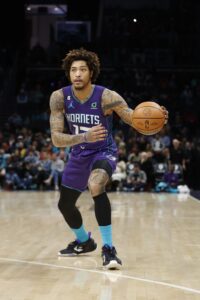In addition to passing along news, rumors, and analysis on a daily basis, Hoops Rumors provides a number of additional features and resources that can be found anytime on the right-hand sidebar of our desktop site under “Hoops Rumors Features,” or on the “Features” page in our mobile menu.
Since those links are easy to overlook and aren’t readily accessible to our app users, we want to periodically highlight a number of our lists, trackers, and other features.
For instance, our lists of current free agents by position/type and by team are constantly updated, as are our lists of 2024 free agents by position/type and by team and our list of 2025 free agents.
We have a number of features related to NBA trades, including a roundup of this offseason’s deals, a recap of the trade exceptions currently available to teams, lists of the players who can’t be traded until December 15 or January 15, and details on which players can veto trades in 2023/24.
We have info on how teams are using mid-level and bi-annual exceptions in 2023/24, as well as which clubs are hard-capped and which have open roster spots. Our two-way contract tracker and contract extension tracker provide information on many of the deals signed this summer, while our list of non-guaranteed contracts by team helps provide a more complete picture of each team’s roster.
We’ve got details on how much this season’s maximum salaries, minimum salaries, and mid-level/bi-annual exceptions are worth, as well as more details on the key cap figures for the 2023/24 season.
The Hoops Rumors Glossary provides in-depth explanations on many concepts related to the salary cap and Collective Bargaining Agreement, presented in the simplest possible terms. We’re working on updating the glossary based on the changes made in the most recent CBA.
Many of our features and trackers are cyclical and will be reintroduced as the year goes on. For example, during draft season, we’ll be keeping tabs on all the early entrants for the 2024 NBA draft.
Be sure to check out the sidebar on our desktop site or our Features page for all of our current resources.

 The 15th pick of the 2015 draft, Oubre has earned at least $12MM in each of the past four seasons. He averaged a career-high 20.3 points in 48 appearances with the Hornets last season while snatching 5.2 rebounds and 1.4 steals per game.
The 15th pick of the 2015 draft, Oubre has earned at least $12MM in each of the past four seasons. He averaged a career-high 20.3 points in 48 appearances with the Hornets last season while snatching 5.2 rebounds and 1.4 steals per game.